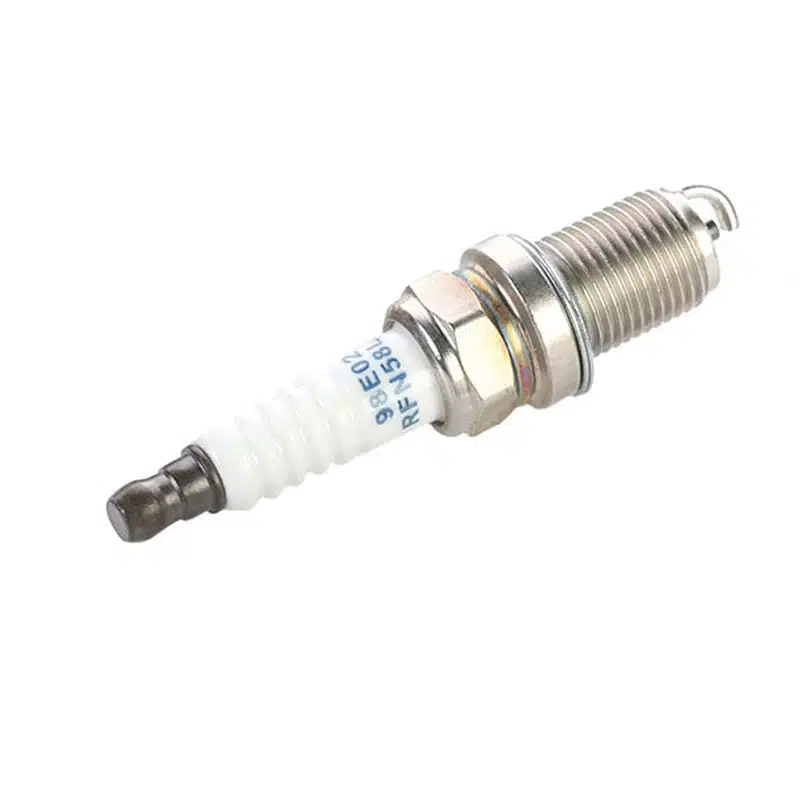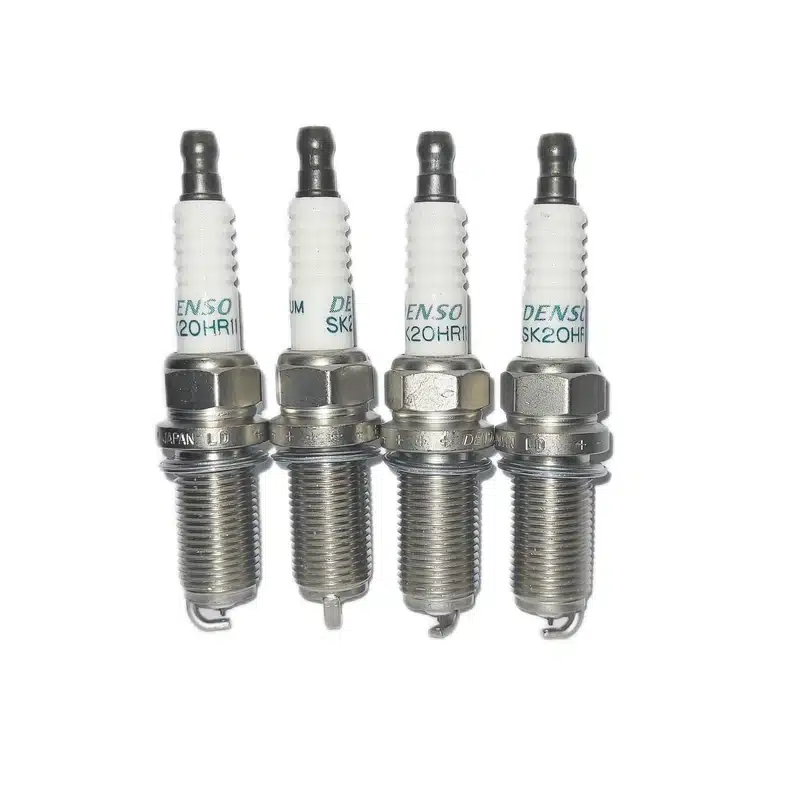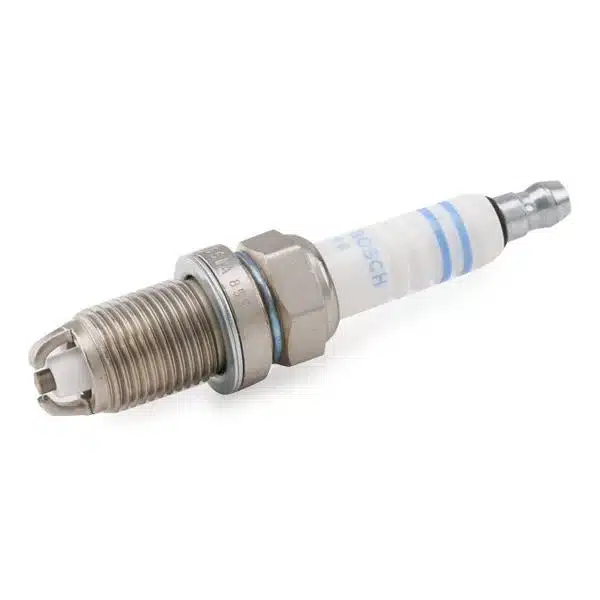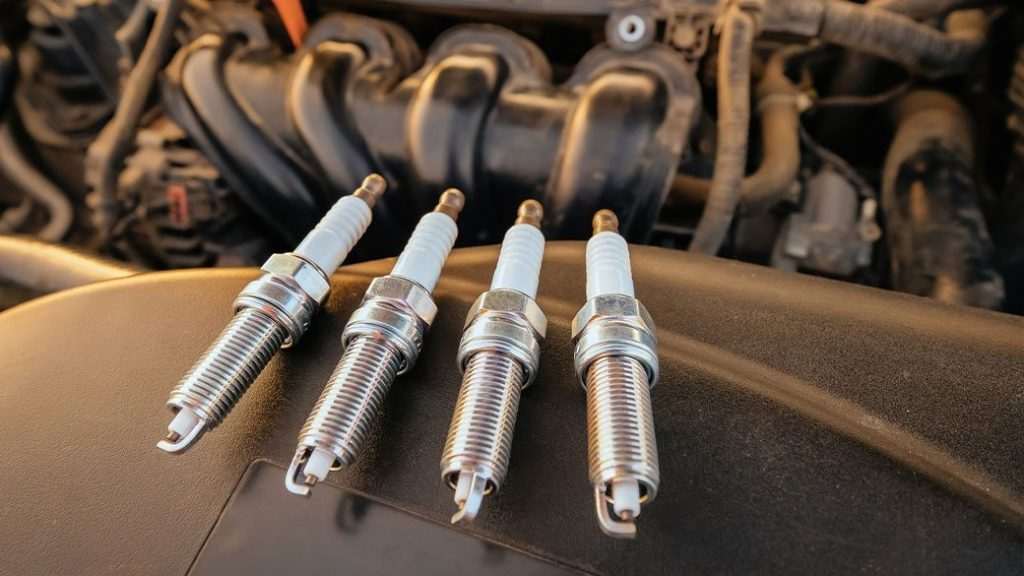Spark plug



what is spark plug and why is it important?
Car engines require a primary ignition source to ignite the fuel inside their motor cylinders. This primary ignition source is a spark produced by a spark plug. In fact, this small component is one of the most important parts of the engine and is responsible for its ignition and start-up. The importance of this component is such that if it malfunctions for any reason, the engine will not start and the car will not be able to move.
There are three main factors that are needed to create the necessary ignition inside the engine: fuel, oxygen, and heat. Heat is provided by the spark plug through sparking. This spark, like a lighter that ignites gas flames, provides the initial fire inside the cylinder. Clearly, the stronger this spark, the better and stronger the required ignition of the engine will be. However, the spark plug supplies its energy for sparking from the car battery.
To be more precise, the spark plug delivers the electrical energy of the battery to the combustion chamber and generates the necessary thermal energy for the car by igniting the fuel and gas mixture inside this chamber. The spark plug is placed on top of the cylinder and cylinder head to create a spark in the combustion chamber. One or two spark plugs are used for each cylinder. The spark plug must be selected according to the engine and the needs of the car, otherwise it will wear out due to excessive sparking and lose its efficiency soon. Also, a malfunctioning spark plug can cause incomplete combustion inside the engine and wear out other parts of the car.
Spark plug components
The spark plug is a small but important component of a car engine. Although it is small, it is simple and free of the complexities of other car parts. However, it has several small components, including:
Insulator
This insulator is made of aluminum oxide or alumina with a glass coating as an outer layer. This outer layer, which is white and visible on the spark plug, prevents contamination from being absorbed by the insulator and completely covers its pores. The insulator provides the necessary strength to the spark plug against high pressures and temperatures it faces. Some spark plugs have a detachable insulator, which are called two-piece spark plugs.
spark plug body
The spark plug body, which is made of steel, holds the spark plug firmly on the cylinder. It has a hexagonal head at the top and a nut or spark plug base at the bottom. A washer is used between the body and the cylinder head for insulation and to prevent the fuel-air mixture from leaking out of the cylinders.
Spark plug terminal
The highest part of the spark plug body and the part that protrudes from the insulator is the spark plug terminal. This part is connected to a wire and is a strong electrical conductor. The terminal has high resistance to corrosion.
Spark plug base
This part of the spark plug, also known as the shell, is connected to the cylinder head and is fastened onto it so that it is flush with the combustion chamber. If this base is too long or too short, the spark plug will experience self-ignition. Spark plugs are divided into two categories of long base and short base according to their size and base diameter, which are used according to the engine and cylinder of each car.
Positive electrode
This part, also known as the central electrode of the spark plug, is located in the center of the insulator and is made of steel alloys such as nickel-steel, chrome-steel, or manganese-steel. This electrode is exposed to high temperatures and is therefore made of an alloy that has the necessary heat resistance. Sometimes this electrode is made in two pieces and a glass-specific resistance is used between these two pieces to increase the life of the spark plug. Recently, spark plugs have used a central electrode covered with nickel-chrome copper, which has good electrical conductivity in addition to high heat resistance. There is an air gap between the positive electrode and the insulator that provides space for the expansion of the electrode. The positive electrode transfers electricity from the terminal to the combustion chamber.
Negative electrode
This electrode, also known as the side electrode, is connected to the spark plug body or base. It is made of nickel-chrome alloy and is shaped like a tab at the end of the base and around the positive electrode. The number of negative electrodes varies in different types of spark plugs.
Spark gap
The gap between the two positive and negative electrodes is called the spark gap, which is measured and adjusted very precisely. This gap varies according to the different needs of the engine and plays an important role in the suitability of the spark plug for the engine. But in general, the larger the gap, the better the sparking.

How the car spark plug works
The spark plug performs three main stages. transferring electrical energy from the battery to the cylinders, creating a spark for combustion inside them. In this order:
Transferring electric current to the spark plug
Transferring electric current to the spark plug The spark plug is connected to a coil in the terminal, which is an electric wire for generating high voltage electric current. This connection is made through a wire with strong electrical insulation. The electricity produced in the coil is transferred through the terminal to the positive or intermediate electrode and goes to the spark plug base. When electricity reaches the spark gap, it tends to move to the negative pole or the body electrode, but the insulating property of the fuel-air mixture prevents this transfer.
Ionizing the fuel-air mixture In this stage
the spark plug transfers a stronger voltage of electricity to the gap to finally transfer the electricity from the positive pole to the negative pole. This high voltage changes the molecular structure of the mixture present in the spark gap and ionizes it by increasing the dielectric power of the gas. Now, the electricity passes through the ionized mixture and is transferred to the negative pole.
sparking
Sparking The passage of electricity through the electrons raises their temperature considerably and expands the ionized gases. This expansion ultimately leads to sparking, similar to what happens in lightning. At the end of sparking, the reaction of the gases with each other increases and creates a flame kernel in the gap. This kernel is called the ignition kernel, which depends on the fuel-gas combination present in the cylinder and the combustion chamber conditions at the time of sparking. To learn more about the car’s ignition system, take a look at the article on the same topic in Car and Driver.
Types of car candle classification
Car candles are classified based on various factors, which have increased their diversity. These factors include:
- Based on the heat code
- Based on the electrode material
- Based on the number of electrodes
Now let’s examine the types of candles based on these factors.
Types of candles based on heat code:
The heat code of a candle is actually the amount of heat present in it at the final stage of its work and its resistance to this heat. This temperature should be such that it does not create combustion before the deadline. That is, the candle can control the temperature until the gases are fully ionized in the gap. Of course, this ability must be high enough to prevent the mixture of gas and fuel from depositing on the electrode. The heat code, which in other words is the ability to transfer heat to regulate its required heat, varies depending on its structure and clearance.
This index, which is also called the candle temperature range, simultaneously indicates the amount of heat that the candle transfers from the cylinder to the engine body. Many factors affect the determination of the heat code of the candle. The most important of these are the length and area of the candle base. The structure of the positive electrode and its thermal conductivity are also other effective factors in this factor. Candles are divided into 3 categories based on this factor:
Cold candles
These candles, which are of the short base type, transfer heat more quickly and lose it, and due to their shorter base, they are less exposed to the temperature resulting from combustion. These candles are suitable for high-temperature engines and reduce the heat generated by sparking and combustion more quickly.
Semi-hot candles
These candles have higher bases than cold candles and have less heat transfer power. Their higher base raises their thermal engagement with the combustion chamber and the temperature resulting from sparking. These candles are used for vehicles with mid-range temperature engines.
Hot candles
These candles have higher bases than the previous two types, transfer less heat, and are more exposed to the heat of combustion, making them hotter. These candles are suitable for low-temperature engines to prevent the formation of combustion residues on their electrodes while maintaining heat.
If the appropriate heat code candle is not selected for the car, it can create many problems and issues for the car. Because the correct performance of the engine depends to a large extent on the proportion of this code. These problems include:
Self-ignition, pre-ignition, or self-combustion
This problem can lead to the opposite performance of the engine. That is, before the piston rises, combustion occurs, and as a result, the piston is involved with gases resulting from combustion before the fuel and air compression, which creates many problems for the engine.
Incomplete combustion
This problem reduces the efficiency of the engine and is accompanied by a lot of noise pollution.

Types of candles based on the number of negative electrodes:
The number of negative electrodes that are connected to the base and are located around the negative electrode can vary from one to four. Candles with more than one negative electrode are called multi-electrode candles, which are referred to as two, three, and four-time candles based on the number of electrodes. Of course, these candles are not suitable for use in any car and must be emphasized or recommended by the manufacturer. The lifespan of multi-electrode candles is longer than single-electrode candles because the frequency of negative poles delays their erosion. However, these candles also have other disadvantages and advantages.
♦ Disadvantages
They are more expensive than single-electrode candles. The gap in them is not adjustable, and they must be replaced if they are damaged. They are not suitable for every engine and car.
♦ Advantages
They have complete combustion and good flame propagation. They have high efficiency or heat code. They can easily and quickly light up the car in cold weather. The erosion of the electrodes in these candles is uniform and simultaneous and proceeds at a slower rate than single-electrode types.
Types of candles based on the structure and material of the positive electrode:
Candles are divided into two categories based on the structure of the positive electrode: needle and regular. In needle candles, the positive electrode tip is needle-shaped, while in regular candles, the positive electrode has a round head.
Regular candles
The positive electrode in these candles is made of nickel. Their round and flat positive electrode head reduces spark accuracy, which reduces combustion quality, leading to incomplete combustion and increased fuel consumption. These candles also have a shorter lifespan than needle candles and do not have high heat resistance.
Needle candles
These candles have a precise and strong spark due to their positive electrode structure, and their explosion flame resulting from sparking is larger. As a result, they provide complete combustion in the cylinder. The advantage of this feature is reduced fuel consumption, increased acceleration, reduced noise and vibration, and ultimately better engine performance and reduced wear and tear on its parts. These candles are divided into two categories based on their electrode material.
♦ Platinum candles: The positive electrode alloy of these candles is platinum, which has high heat resistance. This alloy helps to prevent voltage drop and, consequently, a decrease in spark quality at high temperatures and engine speeds, and complete combustion also occurs at high speeds. These candles also have a longer lifespan than others.
♦ Iridium candles: These candles are the best type of candle available on the market. The positive electrode alloy of these candles is iridium, and the negative electrode is platinum. Together, they have the best and most accurate sparking. The heat resistance of iridium is also the highest resistance among candles. The result is that the most complete combustion is provided by iridium needle candles. These candles also have a longer lifespan than other candles.
The main differences between needle and regular candles are in their lifespan, heat code, and performance, but in the end, it should be noted that the type of candle should be proportional to the engine and its needs. Due to the higher quality of needle candles, a candle that is not suitable for the engine should not be selected, which creates problems and disruptions in its performance and consequently increases the wear and tear of the engine and its parts.
For the import of various types of spare parts, including spare parts for domestic and foreign cars, contact Tata Trading Company. Our connection with various companies around the world enables us to provide you with the best and highest quality spare parts from different brands, bringing you a profitable and easy trade.

